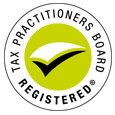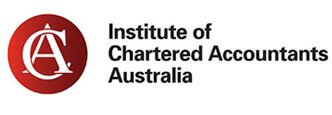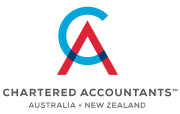At Glance Consultants our experienced team is committed to providing a personalised service to meet our clients’ diverse needs. We offer up-to-date, tailored advice and take great pride in ensuring our clients are well-equipped with the knowledge & skills they need to succeed. Read More
Our Services
We provide a tailor made service to our clients to meet their specific needs.

Business Taxation Services
- Business Taxation Advisory & Planning
- Taxation Audit Support and Australian Taxation Office Liaison
- Preparation & Lodgement of Annual Taxation Returns

Business Advisory
- Management & Financial Reporting
- CFO Services
- Strategic Business Advice & Planning
- Due Diligence Process – Purchase of Business
- Cashflow Management, Forecasting and Budgeting expertise

Individual Taxation Services
- Taxation Advice & Planning
- Preparation & Lodgement of Annual Taxation Returns
- Taxation Audit Support and Australian Taxation Office Liaison

Self-Managed Super Fund
Taxation
- Formation of Self-Managed Superannuation Funds including all required registrations
- Financial Statements and Returns including the preparation of Annual Accounts, Member’s Statements, Income Tax and Regulatory Returns
- Self-Managed Superannuation Fund Audits

Audit and Assurance
- Self-Managed Superannuation Funds (“SMSFs”)
- Owners Corporations
- Solicitors’ Trust accounts/External Examination for Lawyers
- Real Estate Agents’ Trust accounts

Bookkeeping Services
- Xero Accounting Software Integration
- Bank account and credit card reconciliations
- BAS Services
- Payroll Services

Wealth Creation & Risk Management
- SMSF (Establishment & Wind up)
- Financial & Investment Advice
- Property
- Lending & Finance Solutions
- Insurance services
- Estate Planning
Latest News
Client Testimonials
Glance Consultants provided us with invaluable guidance in setting up our unit trust and corporate trustee. We also use their expertise on an ongoing basis for both our business and individual accounting needs. Kavi and the team are always ready to answer our questions. We have no hesitation in recommending their services.
Just wanted to mention how happy I was with your service. Thank you very much for your quick turnaround and a very healthy return, appreciate that you made it so simple and painless. Highly recommend to anyone else who is interested in getting their tax done .
Glance Consultants December 2025 Newsletter
Can the cost of clothing be tax deductible?
Sometimes it can be, but only in limited circumstances.
The tax deductibility of expenditure on clothing is subject to strict ATO guidelines. These cover occupation-specific clothing, compulsory or registered non-compulsory uniforms and protective items.
Conventional clothing
What you can’t claim is the cost of conventional clothing, even where your employer expects you to observe a particular dress style. You might work in an office environment, and your employer expects you to wear a business suit to work, even though you wouldn’t have even bought the suit but for your employer’s dress requirements. While the cost of the suit might seem like a work-related expense, it is not deductible as it is conventional clothing that could also be worn outside of work. This makes it a private expense, even though it relates directly to your employment.
Conventional clothing includes business attire, non-monogrammed black trousers and white shirts worn by wait staff, non protective jeans and drill shirts worn by tradies and athletic clothes and shoes worn by PE teachers.
Occupation-specific clothing
On the other hand, occupation-specific clothing falls on the deductible side of the line, for example a chef’s distinctive chequered pants or a health worker’s blue uniform, including nurses’ stockings and non-slip shoes.
Compulsory uniforms
The cost of clothing that forms part of a compulsory uniform is generally deductible. A compulsory uniform is a set of clothing that identifies you as an employee of a particular organisation. Your employer must make it compulsory to wear the uniform and have a strictly enforced workplace policy in place.
You can only claim a deduction for shoes, socks and stockings if:
» They are an essential part of a distinctive compulsory uniform, and
» The characteristics (the colour, style and type) are an integral and distinctive part of your uniform that your employer specifies in the uniform policy, for example, airline cabin crew members.
You can claim for a single item of clothing such as a jumper if it’s distinctive and compulsory for you to wear it at work. An item of clothing is unique and distinctive if it:
» Has been designed and made only for the employer, and
» Has the employer’s logo permanently attached and is not available to the public.
Just wearing a jumper of a particular colour is not part of a compulsory uniform, even if your employer requires you to wear it, or you pin a badge to it.
Non-compulsory uniforms
You can only claim for non-compulsory work uniforms if your employer has registered the design with AusIndustry. This means the uniform has to be on the Register of Approved Occupational Clothing. Your employer will be able to clarify whether your uniform is registered.
Protective clothing
The cost of protective clothing is deductible, and covers such items as:
» Fire-resistant clothing
» Sun protection clothing with a UPF sun protection rating
» Hi-viz vests
» Non-slip nurse’s shoes
» Protective boots, such as steel-capped boots or rubber boots for concreters
» Gloves and heavy-duty shirts and trousers
» Occupational heavy duty wet-weather gear
» Boiler suits, overalls, smocks or aprons you wear to avoid damaging or soiling your ordinary clothes during your work activities.
Laundry and dry cleaning costs and repairs
You are entitled to a deduction for the cost of cleaning your deductible clothing. If you launder them at home, the Tax Office will allow you a deduction of $1 per load where the load contains only deductible clothing, or 50 cents per load where deductible clothing is mixed with other items.
You are entitled to claim the cost of dry cleaning deductible clothing, as well as the cost of mending and repairs.
Record keeping
You should keep receipts or other documentary evidence of your expenditure on buying, laundering or repairing deductible work clothing. Proof of laundering clothing at home can be in the form of diary entries.
Allowances
If your employer pays you a clothing allowance, this needs to be included in your assessable income, and you can only claim what you have actually spent.
Feel free to come and see us for advice as to whether your expenditure on work
Thinking of a Christmas stay in your SMSF property? Think again!
If your SMSF owns a beach house, country cottage or apartment that feels like the perfect Christmas getaway, this is your friendly end-of-year reminder: you and your family can’t use it over the Christmas and New Year period, not even “just for a week,” and not even if it’s sitting vacant.
It’s one of the most common SMSF traps, and it can lead to serious penalties. Here’s why, in plain English.
Why personal use is off-limits
SMSFs receive generous tax concessions but they come with strict rules. The big one is the sole purpose test. This means your SMSF must exist only to provide retirement benefits to members (and their dependants if a member dies).
Using an SMSF-owned property for a holiday gives you a personal benefit before retirement, which fails that test. The ATO is very clear: residential property held by an SMSF can’t be lived in, stayed in, or used as a holiday home by members or related parties.
“Related parties” covers anyone closely connected to you or the fund, including all fund members, your spouse, children (including adopted children), and wider family like parents, grandparents, siblings, uncles, aunts, nephews and nieces. It also extends to your business partners and any companies or trusts linked to you.
So even if the place is empty for a few weeks and you think “no harm done,” the rules say otherwise.
What if we pay market rent?
This is where people try to get clever and where things still go wrong.
Even if you pay what looks like market rent, leasing residential property to a member or relative is generally prohibited and can trigger other breaches.
One key problem is the in-house asset rule. If your SMSF leases an asset to a related party, that asset is usually treated as an in-house asset, and in-house assets must stay under 5% of the fund’s total value.
Because a holiday home is often a large chunk of an SMSF’s value, renting it to a related party almost always pushes you over that limit, unless your SMSF is extremely large.
And even if you somehow manage to remain under 5%, the ATO may still say the fund was being run partly for your lifestyle, not purely for retirement which brings you right back to the sole purpose test.
The bottom line is that paying rent doesn’t make it okay.
What if we are retired – can we use the holiday home then?
The answer is still no. Reaching preservation age or retiring doesn’t automatically give you the right to stay in or live in a property owned by your SMSF. The property remains a fund asset and using it personally would still be considered personal use of an SMSF asset.
If you want to live in the property after retirement, the usual pathway is to transfer the property out of the SMSF into your own name. This is called an in-specie transfer, which simply means the fund transfers the asset to you personally rather than selling it for cash.
Once the property is in your personal ownership, you can use it without breaching the sole purpose test, because it’s no longer an SMSF asset and you’re not receiving a benefit from the fund.
However, an in-specie transfer can only happen after you’ve met a condition of release, for example, retiring after reaching preservation age, or stopping gainful employment after age 60, meaning you’re legally allowed to access your super.
Alternatively, you may be able to buy the property from the fund yourself, provided the sale is conducted on a genuine arm’s-length, commercial basis.
It’s also important to get advice first, because transferring property out of an SMSF can have tax consequences, including potential capital gains tax (CGT).
What happens if you break the rules?
Breaches around personal use of SMSF assets are treated seriously. Possible consequences include:
» Significant administrative penalties on each trustee
» Being forced to unwind the arrangement
» Trustees being removed or disqualified
» And, at the very worst, the fund losing its complying status (which can mean a huge tax hit).
That’s a steep price for a week at the beach.
What can you do instead?
If your SMSF owns a holiday-style property, the safe approach is simple:
» Rent it to unrelated tenants at market rates, with a proper lease and evidence to support the rent
» Treat it like a real investment, not a family asset
» If you want a holiday there, book somewhere else like any other traveller.
Final word
At this time of year it’s easy to blur the lines between “investment property” and “our holiday place.” But with an SMSF, the lines are firm. If you’re unsure about what’s allowed, how your property is being used, or whether any past use could create an issue, contact us. We can explain the rules in your situation and help you keep your SMSF compliant while protecting your retirement savings.
The 50% CGT discount: More than meets the eye
There is much in the media about how the 50% capital gains tax (CGT) discount has contributed to the housing affordability problem in Australia (although no doubt the problem is a lot more complex than attributing it mainly to any taxation measure or measures).
Nevertheless, the CGT discount looms large for anybody who owns assets that are subject to CGT (and note in this regard a passenger car of any sort – including a vintage car – is not subject to CGT).
However, the 50% discount may even have relevance to your otherwise CGT-exempt home because you may be subject to a partial exemption due to the way you have used it to produce income or in some other cases.
Also, you may inherit a home and not satisfy the requirements for a full CGT exemption!
But the rules for applying the discount are not as straightforward as you would think.
For example, in any case where you make a capital gain you must first apply any prior year or current year capital losses you have before you apply the discount – and this in effect dilutes the value of the discount.
And if the gain arises from the sale of a business asset and if you qualify for the CGT small business concessions, there are other rules to consider before applying the discount (if at all).
Importantly, the full 50% CGT discount is generally not available to foreign residents for assets they acquire after 8 May 2012 (but an apportionment may be applied for any period of residency before becoming a foreign resident).
Further, even if you are a resident when you sell an asset, the 50% discount may be lost to the extent you were not a resident during the period you otherwise owned it.
But these rules are very messy and need to be looked at closely if the need arises.
Note that not all taxpayers can use the discount. For example, a company does not get it (albeit, it has lower tax rate of generally 30%). And superfunds (including SMSFs) are only entitled to a 331/3% discount.
Likewise, not all capital gains qualify for the discount.
Typically, capital gains which arise from granting legal rights to another person or entity do not qualify for the discount – such as gains from granting a restrictive covenant to your employer or granting an easement over land.
Finally, in order to qualify for the CGT discount, you must have owned the asset that gave rise to the capital gain for at least 12 months – and the ATO takes the view that this does not include the day you legally acquired the asset nor the day you sold it.
So, it really means you need to have held the asset for 367 days – or 368 days in a leap year!
As with anything to do with tax, even the CGT discount is not straightforward. So, as always, make sure you seek our advice on any such matters.
Could you be missing out on thousands in lost super?
Most of us keep a close eye on our bank accounts. But superannuation can be easier to lose track of, especially if you’ve changed jobs, moved house, changed your name, or simply set up a new fund and assumed everything followed you.
That’s why the Australian Taxation Office (ATO) has issued a timely reminder. There is now $18.9 billion in lost and unclaimed super sitting across Australia. That’s up $1.1 billion since 2024 and spread across just under 7.3 million accounts.
In other words, a lot of Australians have retirement savings that aren’t currently working for them and some of it could be yours.
WHAT “LOST” OR “UNCLAIMED” SUPER ACTUALLY MEANS
Super doesn’t vanish, but it can go missing from your radar. It typically happens when an account becomes inactive and your super fund can’t contact you, or when you end up with multiple funds over the years.
The ATO also holds certain amounts of super on behalf of individuals, for example, small inactive balances that have been transferred to the ATO, or other unclaimed amounts.
The average amount of lost or unclaimed super is around $2,590 per person. That might not sound life-changing today, but over time it can grow into tens of thousands by retirement.
A SPECIAL NOTE IF YOU HAVE AN SMSF
If you have an SMSF, this ATO update is particularly worth paying attention to. When you established your SMSF, you might have transferred most of your super across, but kept some behind, for example, to retain insurance cover through another fund.
That means there could still be older super accounts from past jobs or retail/industry funds sitting in your name.
The ATO is urging SMSF members to do a check, because a share of the $18.9 billion in lost and unclaimed super might be yours and could be rolled into your SMSF.
One important practical tip is that if you locate lost super and want to move it into your SMSF, but your SMSF doesn’t show up as a transfer option in ATO online services, it’s often due to the fund’s compliance status. Take a moment to confirm your SMSF is listed as “complying” or “registered” on Super Fund Lookup.
HOW TO CHECK FOR LOST SUPER (IT ONLY TAKES MINUTES)
The ATO has made this super simple (pun intended!).
You can:
1. Log in to myGov and go to ATO online services
2. Navigate to the Super section to view:
» Super held by the ATO
» Any lost or unclaimed accounts
3. Request a transfer to an eligible super account.
Even if you don’t find anything, you’ll at least know everything is where it should be.
SIMPLE HABITS THAT HELP YOU STAY ON TOP OF SUPER
Finding lost super is great but preventing it from happening at all is even better. A few easy habits can make a big difference:
» Keep your details up to date with your fund and the ATO so you stay contactable.
» Check whether you’ve got more than one account.Multiple accounts can mean multiple fees and duplicated insurance.
» Consider consolidating if it suits your situation. Fewer accounts can mean lower fees and easier management but just be sure to check any insurance you might lose before rolling over.
» Read your annual statement. It’s a quick way to confirm contributions, fees, returns, investment mix and beneficiaries.
WHY ACTING NOW MATTERS
Since 2022, the ATO has already reunited Australians with about $5.5 billion in previously unclaimed super.
But there’s still nearly $19 billion waiting to be found.
A few minutes today could translate into a healthier retirement balance later.
FINAL WORD
It’s easy to put super in the “deal with it later” basket, but it’s still your hard-earned money. If you want a hand finding lost super, combining accounts, or moving money into your SMSF, reach out to us. We can guide you through the steps and make sure you’re able to claim any lost super without any hassles.
Who can make a claim against a deceased estate?
In Australia, the law recognises that a will maker may sometimes fail to make adequate provision for close family or dependants. In that situation, certain people can ask the Supreme Court for a share, or a larger share, of the deceased’s estate.
This is usually called a family provision claim or a claim against a deceased estate.
Although each state and territory has its own Act, they all broadly follow the same idea:
» You must be an eligible person, and
» You must show that you’ve been left without adequate provision for your proper maintenance and support.
Who is generally allowed to claim?
The exact list differs slightly by state, but across Australia the following categories are commonly eligible:
1. Spouses and de facto partners
» A husband or wife at the time of death.
» A de facto partner who was living with the deceased in a genuine domestic relationship.
2. Children
» Biological and adopted children are generally eligible in every jurisdiction.
» Step-children may be eligible in some states either directly (for example in Victoria and Western Australia) or where they were financially dependent or part of the deceased’s household.
3. Former spouses or partners
Most states allow a former spouse or domestic partner to claim, usually where there has not already been a full and final family law property settlement, or where there are special “factors warranting” an application.
4. Other dependants
Many Acts also allow claims by:
» Grandchildren who were financially dependent on the deceased or were, in substance, brought up by them.
» Other household members (for example, a step-child, parent, or other relative living in the same household) who were wholly or partly dependent on the deceased.
» A person in a “close personal relationship” with the deceased. This might include a long-term carer or companion providing domestic support and personal care. This is most clearly recognised in New South Wales but similar ideas appear elsewhere.
Because the detail differs, someone who is eligible in one state may not be eligible in exactly the same way in another, so local advice is important.
Being eligible is only the first step
Even if you fit into one of these categories, the Court will not automatically change the will. It must decide whether, looking at all the circumstances, adequate provision has been made for you.
Across Australia, courts generally look at similar factors, such as:
» The nature and length of your relationship with the deceased
» Any obligations or responsibilities the deceased had towards you (compared with other beneficiaries)
» The size and nature of the estate
» Your financial position, health, age and future needs
» Any significant contributions you made to the deceased or their property
» Any gifts or support you already received during the deceased’s lifetime
» Any serious misconduct or long-term estrangement, in appropriate cases.
Judges often talk about “what a wise and just” person, or what the “community” would generally regard as fair in the circumstances would have done, without simply rewriting the will from scratch.
Time limits and next steps
Time limits to make a family provision claim are strict and vary by state. The Court will only extend time beyond these time limits in limited situations.
If you think you may have a claim, it is generally sensible to get prompt advice from a wills and estates lawyer.
Surviving (and maybe avoiding) an ATO audit
This piece is aimed at self-employed clients, so if you’re a salary earner or a retiree you can safely move on to the next item.
For others, it goes without saying that at tax time you should disclose all your assessable income and only claim legitimate business deductions.
Failure to do so exposes you to the risk of penalties and interest on top of the underpaid tax.
And the chances of popping up on the ATO’s radar are not negligible. It runs an active small business compliance program that uses industry benchmarks and other information, including “dob ins” received from community members.
Cash jobs
Offering a discount for cash for a lower price might seem tempting, but it suggests an intention of under reporting income.
Tradies and the like occasionally fall out with their clients, some of whom might then report them to the ATO and those “dob ins” can lead to audits being conducted. The practice remains widespread, but you should avoid doing cash jobs – there’s a good chance they will come back to bite you.
Benchmarks
The Australian Tax Office keeps extensive data of industry benchmarks for many industries, tracking gross income, expenses and profits margins. Its website suggests this data enables you to see how you compare with your peers and perhaps identifies areas for improvement. But it also gives the ATO a way of identifying potential audit cases.
If your trading results are well below the industry average, you might want to think about what some of the reasons for that might be. These could include:
» Ill health suffered by yourself or a close family member
» A long holiday
» Your café or retail business is not in the best location
» Competition from similar businesses operating nearby
» You’re inexperienced or just not a great business person.
Averages are just that, and some businesses will be under while others are over. Having an idea of where you sit on the spectrum and why may help you engage with the ATO if and when the time comes.
Lifestyle factors
Another way of identifying cases suitable for audit is for the ATO to assess whether your apparent lifestyle matches the net income disclosed in your tax returns.
If you drive a flash car, take expensive holidays, have your children in private schools, have had major home renovations done or get around wearing a Rolex while your disclosed income doesn’t support such a level of spending, you might have some explaining to do.
The audit
If, for whatever reason, the ATO isn’t satisfied that the taxable incomes you have disclosed are correct, they can make their own estimate using whatever information is available. Any amended default assessments will generally be based on a bank account analysis, as well as estimates of private spending. They can’t just pluck a figure out of the air, but they don’t have to prove where the discrepancy came from either.
Those without complete and accurate records of both their business and private finances are vulnerable to adjustments that involve double counting, especially from a bank analysis that assumes that every unexplained deposit represents undisclosed income and every unexplained withdrawal was used to fund private expenditure. As often as not the two are offsetting but the taxpayer can’t prove it.
To challenge a default assessment a taxpayer has to show not only that the ATO’s estimate is wrong in some respect – they also have to show what their correct taxable income is. The courts and tribunals are littered with default assessment cases where the taxpayer has failed in this regard, leaving them with a very large tax bill.
Protective measures
Here are some of the practices that might assist you in an ATO audit. Most of them would need to be in place before an audit even starts:
» Keep your private and business accounts separate
» Avoid using cash for business transactions
» Never run private expenditure through your company account
» Keep documentary evidence of gifts, loans and other non-taxable receipts that flow through your bank accounts. Create a written record of such transactions as they occur
» Be prepared to explain any apparent discrepancies between your lifestyle and the income disclosed in your tax returns
» If you have made a mistake or two, consider making a voluntary disclosure when you are notified of the audit but before it starts. This could help reduce penalties
» Ensure you have books of account and bank records that verify the taxable income disclosed in your tax returns.
Come and see us to help get you ready for an ATO audit (or avoid one altogether).
Click to view our Glance Consultants December 2025 Newsletter via PDF
Introducing Humello – The Smarter Way to Manage People, Pay & Performance
Running an SME means wearing many hats — but managing HR, pay, and compliance doesn’t have to be one of them.
Humello is an AI-powered HR platform designed for growing businesses. It helps you structure roles, align salaries, generate position descriptions, and analyse pay equity — all in one place. Whether you employ 10 or 500 people, Humello brings discipline, consistency, and data-driven insights to your HR operations — without the need for a full-time HR team.
We’re sharing Humello’s brochure because we believe it can add real value to your business — helping you save time, reduce risk, and make confident people decisions.
Click to view the Humello brochure















